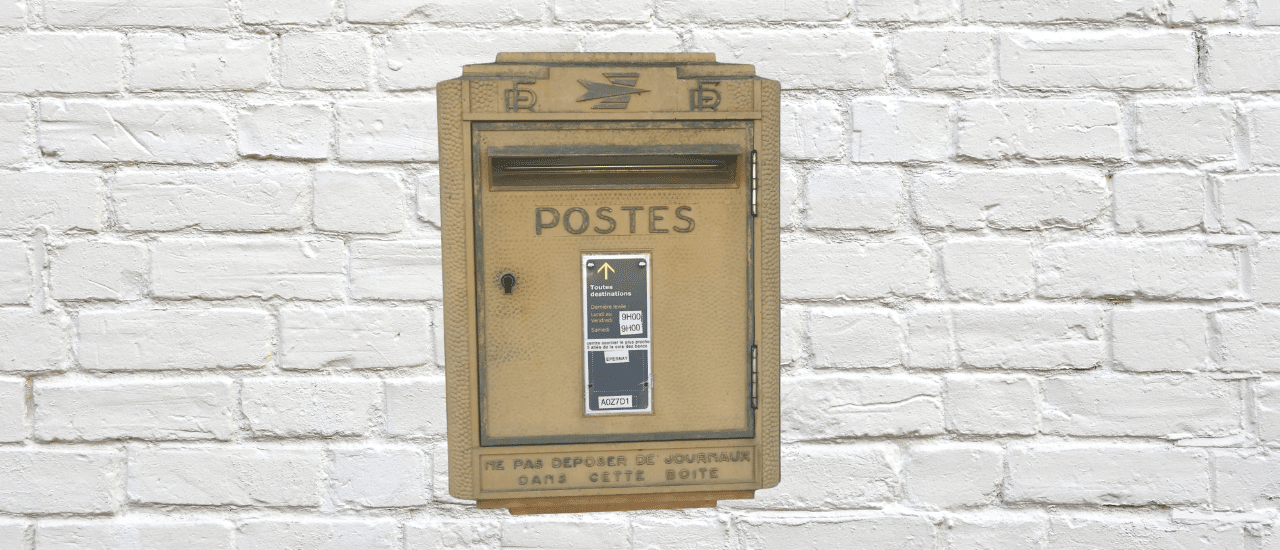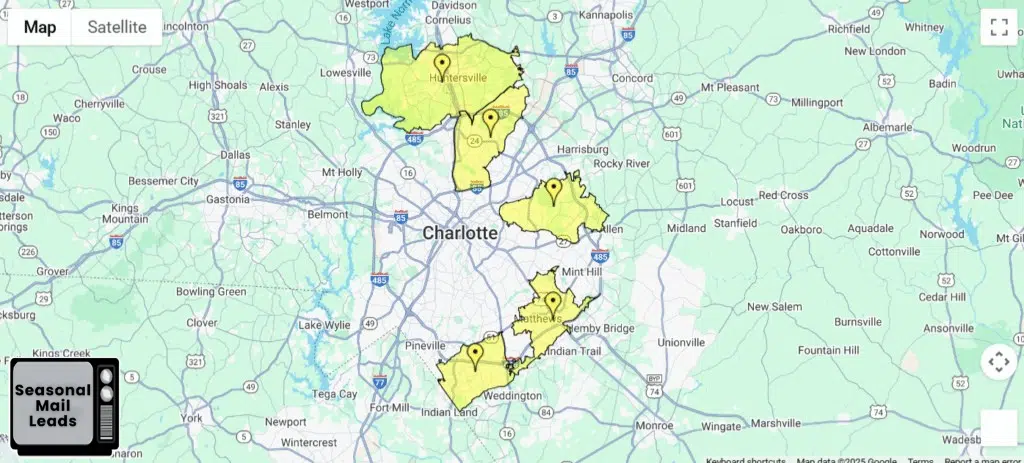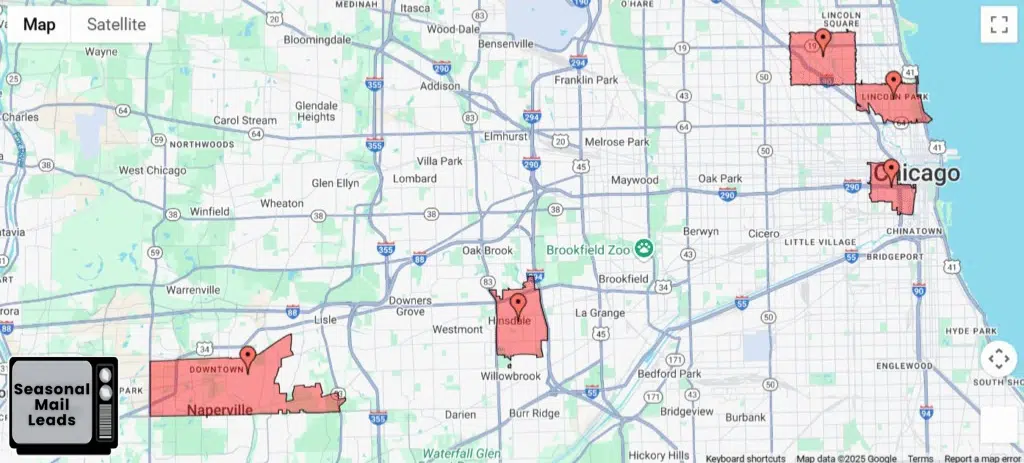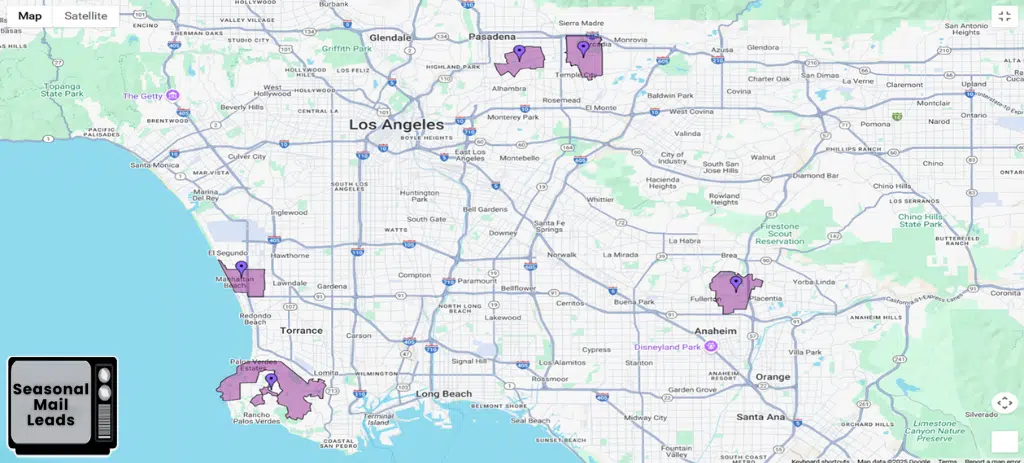
Creating Effective Legal Direct Mail That Works – The Creative Edge
Creating Effective Legal Direct Mail That Works – The Creative Edge
1. Introduction
You’ve mastered precision targeting. You know exactly who your ideal clients are and when they’re most likely to need your services. Your mailing list is pristine, accurate, and brimming with high-intent prospects. But now comes the critical question: once your direct mail piece lands in their hands, how do you ensure it not only grabs their attention but also compels them to take immediate action? How do you transform a piece of paper into a powerful conduit for client acquisition?
The answer lies in the potent combination of effective design and compelling copywriting. These aren’t mere aesthetic considerations; they are crucial principles for legal direct mail, serving as your firm’s powerful creative edge. In a world where attention spans are fleeting and competition for legal services is intense, your mailer must be a meticulously crafted instrument of persuasion, designed to cut through the noise and unequivocally communicate your value.
This article will break down the fundamental anatomy of a high-converting postcard, revealing the strategic visual and linguistic strategies that make your message unforgettable and irresistibly actionable. We’ll delve into the psychology behind effective mailer elements, the nuances of legal messaging, and how Seasonal Mail Leads leverages expert craftsmanship to turn mere prospects into loyal, long-term clients. Get ready to discover how powerful creative can revolutionize your legal lead generation.
2. The Anatomy of a High-Converting Legal Postcard: Blueprint for Success
A high-converting legal postcard isn’t just pretty; it’s a meticulously engineered marketing tool. Every element, from the largest headline to the smallest contact detail, serves a specific purpose: to engage, inform, build trust, and drive immediate action. Understanding this blueprint for success is essential for maximizing your direct mail ROI.
2.1. Compelling Headline: The Immediate Hook
The headline is arguably the most critical component of your direct mail piece. It’s the gatekeeper, deciding within milliseconds whether your mailer gets read or discarded. For legal direct mail, a compelling headline must instantly grab attention and pique curiosity by speaking directly to a prospect’s most pressing concerns or desires.
- Address a Pain Point Directly: The most effective headlines don’t talk about your firm; they talk about the recipient’s problem. For an Estate Planning firm targeting new homeowners, a headline might be: “Just Bought Your Dream Home? Protect It – And Your Family’s Future.” For a family law firm, it could be: “Navigating Divorce? Find Clarity & Compassion.”
- Offer a Clear Benefit or Solution: Rather than just stating the problem, hint at the relief or resolution your firm provides. “Stop Foreclosure: Your Path to Financial Freedom Starts Here.”
- Create Urgency (Ethically): If applicable, a headline can imply timeliness without being alarmist. For instance, “New Property Owners: Don’t Miss Critical Tax Deadlines.” This nudges the reader toward prompt action.
- Be Specific and Relevant: Avoid generic statements. The headline should clearly indicate the legal niche and the type of client it’s for. A headline like “Legal Help” is far less effective than “Protecting Your Assets After a Car Accident.”
- Use Strong Verbs and Emotional Language: Words like “discover,” “secure,” “resolve,” “protect,” and “peace of mind” resonate deeply. The goal is to make the reader feel understood and see your firm as the immediate solution to their distress or uncertainty. A compelling headline is your first and best chance to tell your audience: “This is for YOU, and we can help.”
2.2. Problem/Solution Focus: Empathy and Expertise
Once the headline has captured attention, the body copy must quickly establish a problem/solution focus. This section is where you demonstrate empathy, articulate your potential clients’ pain points directly, and offer clear, effective legal solutions.
- Acknowledge the Pain Point: Begin by briefly outlining the common challenges or anxieties your target audience faces related to their legal need. For example, for new homeowners needing Estate Planning: “Are you worried about what would happen to your new home, or your loved ones, if something unexpected occurred?” This shows you understand their situation.
- Validate Their Experience: Help prospects feel seen and understood. Phrases like “Many new homeowners overlook…” or “You’re not alone in facing…” can build rapport.
- Present Your Firm as the Solution: Clearly and concisely explain how your legal services alleviate that pain. Detail the benefits of your approach, highlighting your firm’s expertise and unique value proposition. For an HOA Law issue: “Our experienced attorneys help you understand and navigate complex HOA regulations, protecting your property rights and peace of mind.”
- Focus on Outcomes: Prospects aren’t just buying legal services; they’re buying outcomes – peace of mind, financial security, resolution, justice. Emphasize these positive results. “We provide tailored Estate Planning that safeguards your assets and ensures your wishes are honored, giving you peace of mind.” This empathetic, solution-oriented approach builds immediate trust and positions your firm as a reliable ally.
2.3. Clear Call to Action: Guiding the Next Step
The call to action (CTA) is the single most important directive on your postcard. It’s what you want prospects to do next. A clear call to action is unambiguous, prominent, and guides prospects explicitly, removing any guesswork.
- Be Specific: Avoid vague phrases like “contact us.” Instead, tell them precisely what to do: “Call for a FREE Consultation Today,” “Visit Our Website for a Free Guide,” “Scan Here to Schedule Your Appointment.”
- Make It Easy: Reduce friction. If it’s a phone call, provide a direct, easy-to-read number. If it’s a website visit, ensure the URL is short, memorable, and preferably a dedicated landing page for the campaign. A QR code offers a quick, mobile-friendly option.
- Create Urgency (Appropriately): While urgency was touched on in headlines, reinforce it here if ethical and appropriate. “Limited Consultations Available,” or “Offer Expires Soon.”
- Prominent Placement: The CTA should stand out visually through size, color, or placement. It should be one of the first things a reader sees after scanning the headline.
- Repeat (Subtly): Sometimes, a softer, secondary CTA can be placed elsewhere on the postcard (e.g., “Learn more at our website”) to reinforce the primary call. Remember, a confused mind always says no. A clear, singular, and compelling call to action is the bridge between interest and engagement, directly turning prospects into actionable leads.
2.4. Contact Information: Ensuring Accessibility
Once a prospect decides to act, they shouldn’t have to search for how to reach you. Contact information must be immediately obvious and easy to find, making it effortless for prospects to connect with your firm.
- Prominent Placement: Display your main phone number, website URL, and physical address (if applicable) clearly on both sides of the postcard. The front should have at least the primary CTA and phone number, while the back can have more detailed contact info.
- Legible Fonts and Sizes: Use font sizes that are easy to read for all ages, avoiding overly decorative or small typefaces that might hinder quick comprehension.
- Multiple Contact Methods: Offer options. Some people prefer to call, others prefer to visit a website or send an email. Providing a phone number, website, and perhaps an email address or QR code caters to different preferences.
- Dedicated Phone Numbers/Landing Pages: For tracking purposes, consider using a unique phone number or a specific landing page URL for your direct mail campaign. This allows you to accurately measure the ROI of your mail efforts.
- Hours of Operation (Optional): For phone calls, briefly mentioning your office hours can manage expectations and encourage calls during active intake times. Ensure your contact information is a beacon, not a hidden clue. The easier you make it for prospects to reach you, the higher your conversion rates will be.
2.5. Credibility & Trust Signals: Building Confidence Instantly
For law firms, trust is the bedrock of client relationships. Your direct mail must immediately establish credibility and trust, reassuring prospects that your firm is reputable, experienced, and the right choice for their legal needs.
- Firm Name and Logo: Prominently display your firm’s professional name and logo. These are your primary brand identifiers.
- Bar Information/Jurisdiction: Include appropriate bar information or jurisdiction details as required by ethical rules and to signify professional licensing.
- Professional Affiliations/Awards: If relevant and permissible, mention memberships in respected legal organizations, or industry awards that bolster your authority.
- Brief Client Testimonials (where appropriate and compliant): Short, impactful testimonials can be incredibly powerful. However, exercise extreme caution and ensure full compliance with your state’s bar rules regarding attorney advertising. Many states have strict regulations or outright prohibitions on testimonials or past results. If permissible, ensure they are authentic, relevant, and concise.
- Years of Experience/Practice Focus: Briefly stating “Serving [Your City/Region] for X Years” or “Specializing in [Legal Niche] Since [Year]” can immediately convey experience and focus.
- Professional Photography: If using images of attorneys or staff, ensure they are professional, approachable, and convey competence. Avoid generic stock photos that lack authenticity.
- Ethical Disclaimers: As discussed further in section 3.4.4, necessary ethical disclaimers (e.g., “Attorney Advertising,” “Past results do not guarantee future outcomes”) must be included clearly and conspicuously. While often a legal requirement, their presence also signals a firm that adheres to professional standards. These credibility and trust signals work in concert to instill confidence, making prospects feel secure in taking the next step with your firm.
3. Visual Design Principles for Legal Mail: More Than Just Aesthetics
The visual presentation of your direct mail piece is not merely about making it look good; it’s about making it effective. Visual design principles play a crucial role in conveying professionalism, readability, and emotional resonance, ultimately impacting how your message is received and acted upon. For legal direct mail, design is an extension of your firm’s brand and competence.
3.1. Professionalism & Brand Consistency: Reflecting Your Firm’s Integrity
Your direct mail piece is often the first tangible interaction a potential client has with your firm. Therefore, it must exude professionalism and brand consistency, immediately reflecting your firm’s credibility and integrity.
- High-Quality Printing: The tactile experience matters. Use high-quality card stock with a professional finish. A flimsy, cheap-looking mailer can undermine your message before it’s even read.
- Consistent Branding: Ensure your logo, firm colors, fonts, and overall visual style are consistent with your website, letterhead, and any other marketing materials. This consistency reinforces your brand identity and builds recognition.
- Clean and Uncluttered Layout: A professional design avoids visual chaos. Ample white space, clear sectioning, and organized information create a sense of order and sophistication, reflecting a well-organized and competent firm.
- Visual Hierarchy: Guide the reader’s eye. Use size, color, and placement to emphasize the most important elements (headline, CTA), ensuring key information is instantly digestible. A cluttered or inconsistent design can convey disorganization or even lack of professionalism, eroding trust. By maintaining a polished, consistent brand image through your direct mail, you subtly assure prospects of your firm’s reliability and expertise.
3.2. Readability (Fonts, Layout): Ensuring Your Message Is Understood
Even the most brilliant copy is useless if it can’t be easily read. Readability is paramount, ensuring your message is easy to digest and doesn’t create friction for the reader. This involves thoughtful choices in fonts and layout.
- Font Choice:
- Serif vs. Sans-Serif: While sans-serif fonts (like Arial, Helvetica) are often preferred for digital screens due to their clean lines, serif fonts (like Times New Roman, Georgia) can enhance readability in print, especially for longer blocks of text, as the “serifs” guide the eye along the line. However, a clean, modern sans-serif can also work beautifully for postcards.
- Legibility: Choose fonts that are clear and legible, avoiding overly decorative, thin, or condensed typefaces that are difficult to distinguish, especially for older demographics.
- Size: Ensure body copy is at least 10-12pt for comfortable reading. Headlines should be large and bold enough to grab attention instantly.
- Layout and White Space:
- Ample White Space: Don’t cram too much information onto the postcard. Strategic use of white space (empty areas) around text and images improves readability, reduces visual fatigue, and makes the mailer feel less overwhelming.
- Logical Flow: Organize content in a logical, intuitive flow that guides the reader from the headline to the CTA. Use bullet points, short paragraphs, and clear headings to break up text and make it scannable.
- Contrast: Ensure there is sufficient contrast between the text color and the background color. Dark text on a light background is always the most readable. A highly readable mailer respects your prospect’s time and makes it effortless for them to absorb your key message and respond.
3.3. Use of Imagery (Relevant, Evocative): Connecting Emotionally
The right imagery can communicate complex emotions and messages instantly, transcending language barriers. For legal direct mail, images must be relevant, evocative, and contribute positively to your firm’s brand perception.
- Professional and High-Quality: Always use high-resolution, professional images. Blurry, pixelated, or amateur photos detract from your firm’s professionalism.
- Relevant to the Legal Niche: Images should directly relate to the services offered or the client’s situation. For Estate Planning for new homeowners, a comforting image of a family or a home could be appropriate. For personal injury, an image conveying empathy or resolution, not distress, might be suitable.
- Evoke Positive Emotions: Aim to evoke feelings of trust, relief, security, calm, or resolution. Avoid images that are overly aggressive, confrontational, or emotionally distressing, which might repel potential clients.
- Authenticity over Generic Stock: While stock photos are accessible, whenever possible, use authentic images of your firm’s building (if impressive), professional portraits of attorneys, or relevant symbols that feel genuine. Generic stock photos can feel impersonal and undermine trust.
- Diversity and Inclusivity: Ensure your imagery reflects the diversity of the community you serve, making your firm feel welcoming and accessible to a broader audience. Thoughtful use of imagery can create an immediate, positive connection, reinforcing your message and building emotional resonance with your high-intent prospects.
3.4. Color Psychology in Legal Marketing: Subtly Influencing Perception
Colors are powerful psychological tools. In legal marketing, understanding color psychology can subtly influence perception and response, evoking specific emotions and associations with your firm.
- Blues: Often associated with trust, stability, professionalism, and reliability. This makes various shades of blue a popular and effective choice for law firms, conveying authority and calmness.
- Greens: Can evoke feelings of growth, balance, and harmony. Lighter greens might suggest relief or a fresh start, while deeper greens can imply wealth and prestige.
- Grays/Silvers: Convey sophistication, professionalism, and neutrality. Often used as secondary colors to add a modern, refined touch.
- Warm Tones (Yellows, Oranges): Used sparingly, these can add warmth and approachability. However, too much can feel informal or aggressive for a legal context.
- Reds: Associated with urgency, passion, and attention. Can be effective for specific calls to action if used in small, impactful bursts, but large amounts might feel too aggressive for a law firm.
- Avoid Overly Bright/Neon Colors: These can detract from professionalism and appear less credible for serious legal matters.
- Consistency: Whatever color palette you choose, ensure it’s consistent with your overall brand identity to strengthen recognition and trust. Strategic use of color reinforces your firm’s desired image and subtly influences the recipient’s emotional response, guiding them toward a positive perception of your services.
4. Copywriting that Connects and Converts: The Power of Words
Beyond the visual, the words on your direct mail piece are paramount. Copywriting that connects and converts is an art form, especially in the legal field, requiring precision, empathy, and strict adherence to ethical guidelines. It’s the power of words that truly persuades prospects to take action.
4.1. Benefit-Driven Language: What’s In It for Them?
This is a fundamental shift in perspective. Instead of simply listing your services, benefit-driven language focuses on how your services solve the client’s problems and improve their lives. Prospects care about what your services do for them, not just what your services are.
- Translate Features into Benefits:
- Feature: “We offer Estate Planning services.”
- Benefit: “Secure your family’s future and safeguard your assets, ensuring peace of mind.”
- Feature: “We handle HOA disputes.”
- Benefit: “Resolve frustrating HOA conflicts, protecting your property rights and restoring your tranquility.”
- Speak to Desires and Fears: Address both what they desire (security, justice, resolution, financial stability) and what they fear (loss of assets, prolonged legal battles, uncertainty).
- Use “You” and “Your”: Directly address the reader to make the message personal and relevant. “You deserve peace of mind,” “Protect your new home.”
- Emotional Connection: While legal services are serious, tapping into the emotional aspects of a client’s situation (e.g., the relief of a resolved issue, the security of protected assets) can significantly increase engagement. Benefit-driven language is about selling the positive outcome, not just the legal process, making your services far more appealing and actionable.
4.2. Conciseness & Clarity: Get to the Point
Attorneys are trained to be thorough and precise, often leading to extensive, detail-rich explanations. However, for direct mail, conciseness and clarity are paramount. You have a very limited window to convey your message.
- Avoid Legal Jargon: Speak in plain, accessible language. Prospects don’t need to understand complex legal terms; they need to understand how you can help them. Replace “testamentary trust” with “a plan to protect your children’s inheritance.”
- Short Sentences and Paragraphs: Break up text into easily digestible chunks. Long, dense paragraphs are intimidating and likely to be skipped.
- Focus on One Core Message: While you may offer multiple services, each direct mail piece should ideally focus on one primary legal need and its solution. This prevents dilution of your message.
- Scannability: Use bullet points, bolded text for keywords, and clear headings to make the mailer scannable. Many readers will first skim the postcard; if they find key information quickly, they’re more likely to read in depth. Conciseness and clarity respect the reader’s time and ensure your crucial message is immediately understood, not buried in complexity.
4.3. Urgency & Scarcity: Encouraging Prompt Action (Ethically)
While not always applicable, judicious and ethical use of urgency and scarcity can provide a gentle nudge that encourages prospects to take prompt action rather than deferring a legal issue.
- Time-Sensitive Legal Needs: Many legal issues are inherently time-sensitive.
- “Don’t miss the deadline to contest your property tax assessment.” (for Tax Law / Property Law)
- “Act now to protect your rights after a recent accident.” (for personal injury)
- “New HOA regulations taking effect soon? Understand your options.”
- Limited Offers (Ethically): If your firm offers a free consultation or a specific initial review, you can ethically introduce a soft sense of scarcity, such as “Limited number of complimentary consultations available this month.” This encourages immediate booking without being overly aggressive.
- Avoid False Urgency: Never create artificial or deceptive urgency. All claims must be truthful and justifiable. The goal is to motivate action for genuine, time-sensitive needs, not to pressure prospects unfairly. When used appropriately and ethically, urgency and scarcity can significantly improve response rates by prompting prospects to address their legal needs sooner rather than later.
4.4. Ethical Messaging & Disclaimers: Building Trust and Compliance
For law firms, ethical messaging is not just good practice; it’s a legal imperative. All copy must be truthful, compliant with state bar advertising rules, and include any necessary disclaimers. This builds trust and safeguards your firm.
- Truthfulness and Accuracy: All claims about your firm’s expertise, experience, and past results must be accurate and verifiable. Avoid exaggerations or misleading statements.
- State Bar Compliance: Research and adhere strictly to your specific state bar’s rules on attorney advertising. This includes regulations on:
- Testimonials and Endorsements: Many states have strict rules or prohibitions.
- Referral Fees: Disclosures if applicable.
- Areas of Practice/Specialization: How you can describe your expertise.
- Disclaimers for Past Results: Phrases like “Past results do not guarantee future outcomes” are often mandatory.
- “Attorney Advertising”: Many states require this explicit label on marketing materials.
- Clear Disclaimers: If required, ensure disclaimers are legible and placed prominently, not hidden in tiny print. While they are a legal necessity, their presence also demonstrates your firm’s adherence to professional standards.
- Sensitivity: When addressing sensitive legal issues (e.g., Family Law, Bankruptcy), the language must be empathetic and respectful, avoiding sensationalism. Ethical messaging not only ensures compliance but also reinforces your firm’s integrity, building a foundation of trust with potential clients.
5. Seasonal Mail Leads’ Design & Copywriting Process: Expert Craftsmanship
At Seasonal Mail Leads, the creation of your direct mail campaign is far from a templated exercise. It is a process rooted in expert craftsmanship, blending creative vision with deep legal marketing expertise to ensure your mail pieces are both stunning and effective.
5.1. Custom Design Services: Tailored to Your Brand
Your law firm is unique, and your direct mail should reflect that. Our custom design services ensure that every postcard aligns perfectly with your firm’s brand identity, values, and specific campaign goals.
- Collaborative Approach: We begin with a thorough understanding of your firm’s aesthetic preferences, brand guidelines, and target audience. Our designers work closely with you to capture your firm’s unique essence.
- Brand Alignment: We ensure that colors, fonts, imagery, and overall layout are consistent with your existing brand assets (website, logo, physical office). This continuity strengthens your brand recognition and reinforces professionalism.
- Strategic Layout: Our designers meticulously plan the visual hierarchy, ensuring the headline, problem/solution, and call to action are prominently displayed and guide the reader’s eye effortlessly. They understand how subtle visual cues can enhance readability and impact.
- Creative Innovation: While adhering to legal industry standards, our team constantly explores innovative design elements that help your mailer stand out in the mailbox, making a memorable visual impression that reflects the modernity and forward-thinking nature of your firm. The result is a bespoke design that doesn’t just look good; it performs.
5.2. Expert Copywriters for Legal Nuances: Translating Law into Leads
The legal field demands a specific kind of communication – precise, yet approachable. Our team of expert copywriters for legal nuances understands this balance, crafting messages that resonate deeply with potential clients while strictly adhering to industry standards.
- Legal Industry Specialization: Our copywriters are not just general marketers; they have a deep understanding of the legal landscape, common client pain points, and the specific language that effectively connects with individuals seeking legal assistance.
- Benefit-Driven & Empathy-Focused: They excel at translating complex legal services into clear, benefit-driven language that addresses the emotional and practical needs of your prospects. They know how to convey empathy and build trust through words.
- Compliance and Ethical Scrutiny: Crucially, our copywriters are acutely aware of state bar advertising rules and ethical considerations. They meticulously craft every word to ensure compliance, including necessary disclaimers and appropriate language around sensitive topics, safeguarding your firm’s reputation.
- Clear Calls to Action: They formulate compelling and explicit calls to action that compel immediate engagement, guiding prospects seamlessly from interest to inquiry. This specialized expertise ensures your message is not only persuasive but also perfectly suited for the legal industry’s unique demands.
5.3. Compliance Review in Design: Built-In Protection
Compliance isn’t an afterthought at Seasonal Mail Leads; it’s an integral part of our design and copywriting process. We integrate compliance checks directly into the design process to safeguard your firm from potential ethical or regulatory issues.
- Proactive Integration: From the initial concept, our teams work in tandem to ensure all elements – visual and textual – meet state bar advertising guidelines. This proactive approach prevents costly revisions down the line.
- Disclaimer Placement: We ensure all mandatory disclaimers (e.g., “Attorney Advertising,” “Past results do not guarantee future outcomes,” bar membership details) are conspicuously placed, legible, and meet specific size/visibility requirements where applicable.
- Review Protocols: Our internal review protocols include dedicated checks for adherence to ethical marketing standards relevant to the legal profession. This multi-layered approach provides an additional layer of security, giving your firm peace of mind that your direct mail is not only effective but also fully compliant.
5.4. Proven Legal Direct Mail Postcard Examples
While we cannot display actual images here, let’s illustrate the power of our designs with examples of successful hypothetical postcards for different legal niches:
- For Estate Planning (Targeting New Homeowners):
- Front: A serene image of a family silhouette walking towards a new home. Bold headline: “New Homeowner? Secure Your Family’s Legacy & Your Peace of Mind.” Sub-headline: “Protect your biggest investment with a personalized Estate Plan.” Prominent Phone Number and QR Code.
- Back: Clear Problem/Solution sections: “The Dream Home is Just the Start. What if…?” leading to “We Help You Plan For…” Benefit-driven bullet points (e.g., “Avoid Probate,” “Protect Heirs,” “Minimize Taxes”). Clear CTA: “Call Today for Your FREE Estate Review Consultation!” Firm name, logo, website, and required disclaimers are clearly visible.
- For Personal Injury (Local Market):
- Front: A professional, empathetic headshot of the lead attorney. Headline: “Injured? Don’t Suffer in Silence. Get the Justice You Deserve.” Small, impactful image of a hand being helped. Prominent Phone Number.
- Back: Brief, concise messaging focusing on compassion and results (e.g., “We Handle: Car Accidents, Slip & Falls, Work Injuries”). Benefit-driven copy: “Focus on Your Recovery, We’ll Handle the Rest.” Clear, bold CTA: “FREE Consultation – Call [Phone Number] Now!” Includes firm name, address, website, and “Attorney Advertising” disclaimer.
- For HOA Law (Targeting Specific Communities):
- Front: An image of a well-maintained community entrance, but with a subtle question mark. Headline: “HOA Disputes Got You Down? Understand Your Rights.” A smaller text line: “Protecting homeowners in [Specific Community Names].”
- Back: Problem: “Are you facing issues with HOA fees, rules, or architectural approvals?” Solution: “Our team provides clear, effective legal guidance.” Benefits: “Resolve disputes, avoid penalties, protect your property value.” CTA: “Schedule Your HOA Consultation Today!” Firm details and compliance.
These examples demonstrate how our combination of strategic visuals, empathetic copy, and clear calls to action, all within compliance, results in high-impact direct mail that consistently converts.
6. Call to Action:
Want postcards that don’t just get delivered, but truly deliver results?
- Request Your FREE Sample Postcard to experience our design quality firsthand.
- Consult with Our Design & Copywriting Experts and elevate your next campaign.
Don’t let your valuable direct mail investment fall flat. Unlock your creative edge with Seasonal Mail Leads and transform prospects into loyal clients.
7. Conclusion:
In the journey of legal lead generation through direct mail, precision targeting sets the stage, but it is the marriage of strategic design and compelling copy that brings the entire campaign to life. This powerful combination is your firm’s creative edge, ensuring your message not only stands out in the mailbox but also resonates deeply with your high-intent prospects, compelling them to take that crucial first step towards becoming a client.
Seasonal Mail Leads provides unparalleled expert craftsmanship in crafting legal direct mail. From bespoke visual designs that convey professionalism and trust, to persuasive and compliant copywriting that speaks directly to a prospect’s needs, we ensure every element works in harmony. Our meticulous attention to detail, coupled with our deep understanding of both marketing psychology and legal ethics, ensures your mail not only looks professional but also effectively turns prospects into loyal, long-term clients.
Invest in the creative edge that truly converts. Partner with Seasonal Mail Leads to craft high-impact direct mail that delivers predictable, high-quality clients to your law firm.






